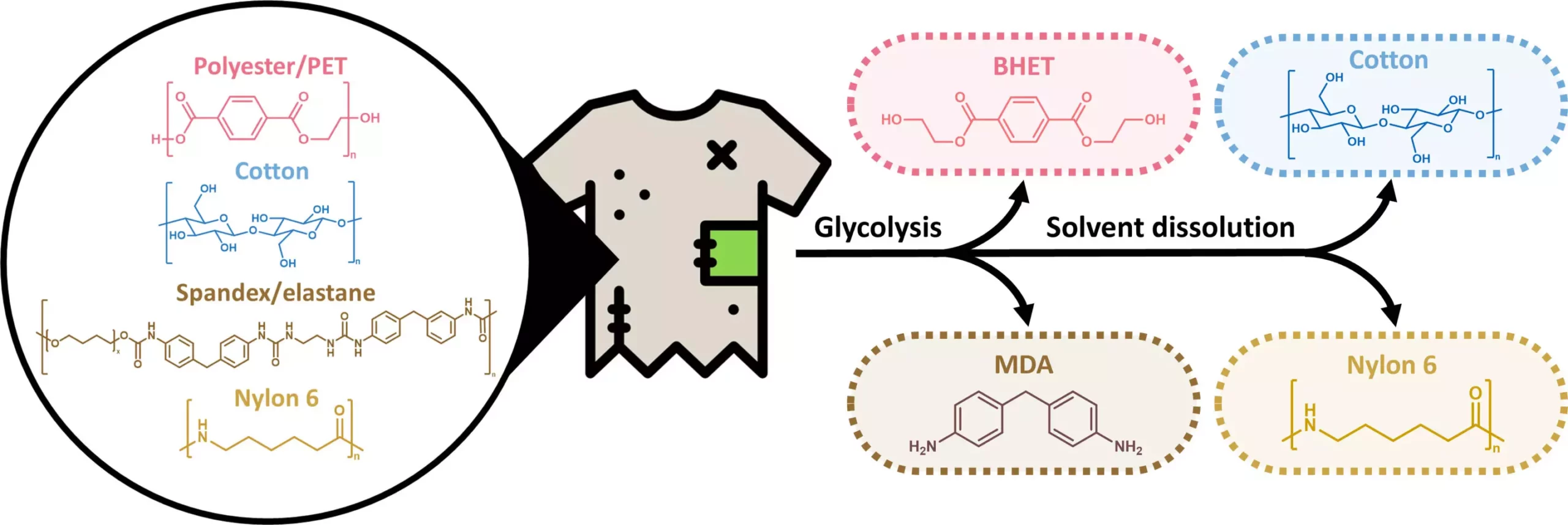In a groundbreaking study, a team of chemical and biomolecular engineers have devised a innovative method to chemically separate fibers in textiles for more efficient and cost-effective recycling. This development marks a significant advancement in the field of sustainability, particularly in the fashion industry where “fast fashion” has become a prevalent trend.
The Process Behind the Breakthrough
This new process involves the use of a solvent to break the bonds that hold various fibers together, such as polyester with nylon or cotton. By incorporating zinc oxide as a catalyst and utilizing a microwave oven, the researchers were able to accelerate the bond-breaking process, reducing it to as little as 15 minutes. The result is the separation of different materials, including nylons, cottons, and polyesters, enabling the possibility of creating new polyester from the breakdown product BHET.
During testing, the team demonstrated that the integrity of nylon and cotton fibers was maintained, indicating the potential to use them in the production of new clothing items. However, challenges such as the presence of flame retardant chemicals in treated textiles were identified, necessitating further measures for their removal before recycling. Nevertheless, the researchers presented economic models to support the feasibility of their innovative recycling process.
The implications of this research are significant for the textile industry and broader efforts towards sustainable practices. By streamlining the recycling of textiles and enabling the reuse of fibers in new clothing production, this breakthrough holds the promise of reducing waste, conserving resources, and minimizing the environmental impact of fashion consumption. As the demand for more sustainable solutions grows, initiatives like this offer a glimpse into a future where circular economies and eco-friendly practices are the norm.
The development of a novel approach to textile recycling by a team of chemical and biomolecular engineers represents a crucial step towards a more sustainable future for the fashion industry. By addressing the challenges posed by “fast fashion” and complex fiber blends, this research paves the way for innovative solutions that prioritize environmental conservation and resource efficiency. It is evident that such breakthroughs are essential in driving meaningful change and fostering a culture of sustainability in textile production and consumption.


Leave a Reply